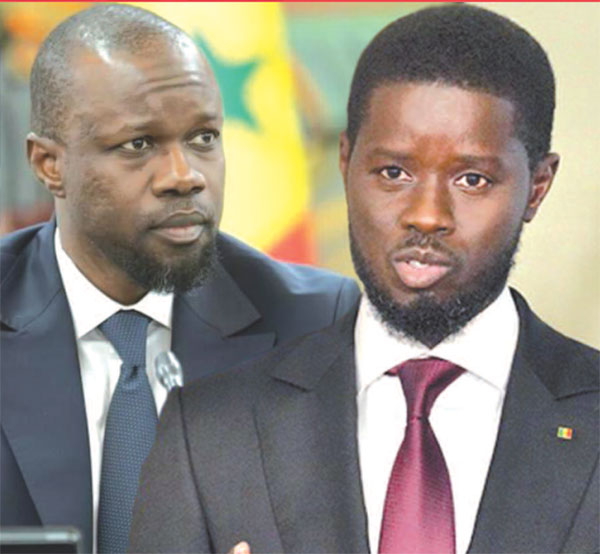New bond issue: Senegal Debt Project

At a time when the country’s financing needs are the subject of much comment, the government has just raised another bond issue for more than 265 billion. This is in addition to the 1,000 billion borrowed by the State since last April. No one knows what the funds will be used for. In any case, the borrowing race continues unabated, despite Macky Sall’s departure
Yesterday, a press release from the Regional Stock Exchange (Brvm) informed the public that the State of Senegal had raised 3 bond issues for a total of 265 billion CFA francs, with variable maturities ranging from 5 to 10 years, and 3 tranches of different interest rates. The first loan, which runs from 2024 to 2029, has an interest rate of 6.45%, as does the third, which runs from 2024 to 2034, with an interest rate of 6.65%, while the second will yield 6.25% for the institutions committed to Senegal.
The press release from the Abidjan regional stock exchange justified the statement that these borrowed amounts would be used to « finance investments planned in the 2024 Budget », enabling Managing Director Félix Edoh Kossi Amenounvè to rejoice that « these borrowings mark a very noteworthy return of the State of Senegal to Brvm ».
At a time when oil is beginning to flow freely, we can only rejoice at this country’s strong, even more established reputation. Indeed, one wonders when Senegal, one of the heavyweights of the regional financial market, has ever been absent from Brvm over the last ten years.
Sonko’s passage at the Assembly: Yaw censors the DPG
We know that before leaving office, President Macky Sall, through his various heads of government, had embarked on an international, and particularly sub-regional, borrowing drive. This was done in amounts averaging 50 to 100 billion CFA francs per quarter.
There was, in bulk and without any pre-established order, 30 billion in September 2022, 50 billion by public offering, at an interest rate of 6.30% per annum for 10 years, from 2015 to 2025. In October 2023, a loan of 120 billion Cfa was issued through Invictus Capital Finance. In fact, all intermediation firms in the Uemoa zone have had their share of regular financial transactions with the Senegalese authorities.
This was the conversation in the lounges of Dakar about the « sustainability of the debt », from those who felt that the politicians were sinking the country into the inextricable mire of debt, which only served to mortgage the future of the youth, and above all to sell off « our just-discovered wealth ». Some thought that things would get better with a change of regime. Once Pastef’s leaders were in power, the country would be definitively rid of Macky Sall’s Senegal Debt Plan (Pse) (sic).
It didn’t take long to realize that things weren’t moving as fast as we’d hoped.
Demographic survey: Fewer children die, fewer are born
It wasn’t until the American website Bloomberg announced that the government had raised a Eurobond of 450 billion CFA francs that the news was officially confirmed. Unfortunately, nothing was said about the conditions of this loan, which were more draconian than those issued by African countries such as Kenya, Côte d’Ivoire or Benin, which could hardly be described as financial heavyweights compared to Senegal.
The most extraordinary thing is that, as was said during the handover of services between presidents Macky Sall and Diomaye Faye, the current government did not inherit empty pockets. Macky Sall is said to have left him over 320 billion in his accounts at Bceao. To which should be added more than 150 billion Cfa in bonds and treasury bills. All this does not exclude other payments from various sources such as the African Development Bank (ADB), among others. Today, based on the figures announced, the State would have a kitty of more than 1,000 billion Cfa, accumulated in less than 3 months. Without, however, saying what it wants to do with it.
In a rather gloomy economic and social climate, public opinion has the feeling that the country’s situation is not improving, while the International Monetary Fund (IMF), our financial watchdog, has taken the liberty of coming to Dakar to declare that Senegal has taken the liberty of borrowing more than its current needs, and has put itself in a situation of over-financing. This situation is all the more serious in that IMF officials claim that some of these borrowing operations took place without their knowledge. The question then arises as to how these colossal sums raised by the government on the financial markets could find their way into the monetary circuit.
For the moment, the Table of Financial Operations State (Tofe), as reported in the latest quarterly statistical bulletin for the first quarter of 2024, gives no indication of any trace of these billions, which still seem mirific.
Neither « transferable deposits nor other deposits included in the money supply are showing any positive trend ». Worse still, « net foreign assets » with the Central Bank or commercial banks have only shown a negative year-on-year trend since the last quarter of 2023. None of the bankers interviewed has yet been able to tell Le Quotidien where the State’s international kitty is stashed away. Only one economist has been able to explain why the Statistical Bulletin was probably drawn up before the latest state operations. But if that’s the case, we’ll find out soon. Or is it just window-dressing when the country continues to run up unnecessary debt?
By Mohamed GUEYE / mgueye@lequotidien.sn

